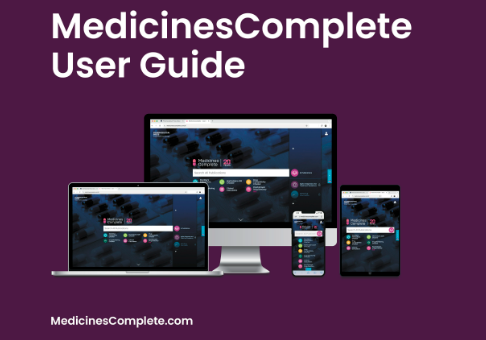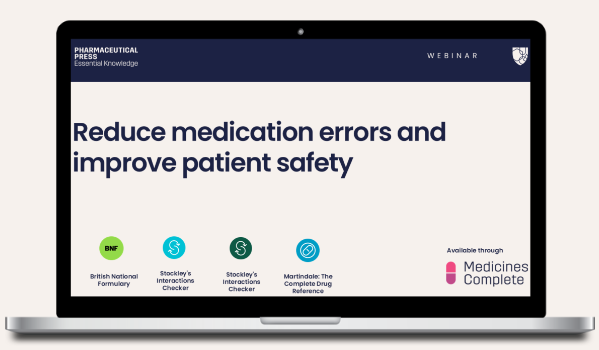What is a contraindication?What is a contra-indication?
A contra-indication is a situation where a particular drug or medical intervention should be avoided because it could be harmful to a subset of patients. Such circumstances could include a concomitant illness, demographic factor (e.g. gender, age) or predisposition (e.g. immunological factor, a particular genotype or previous adverse reaction to the medicine or class of medicine). Living with haemophilia or taking warfarin, for example, are contra-indications for aspirin, as the medicine can cause excess bleeding.¹
Please complete the form at the bottom of this article to request a complimentary trial of MedicinesComplete.
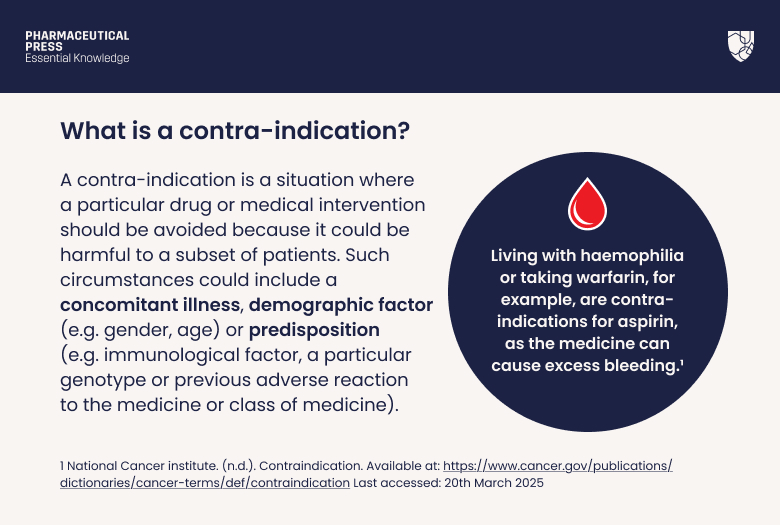
The different types of contra-indication
Contra-indications are circumstances in which a particular drug could be harmful to a subset of patients.¹ There are two types of contra-indication: relative and absolute.²
- A relative contra-indication means health professionals should be cautious when prescribing a medicine in a specific situation. The medicine can be used, but only if the benefits clearly outweigh the risks, and if specified precautions are taken.² ³ This is sometimes referred to as a caution.³
- Absolute contra-indications have the potential to be life-threatening, and in these cases the medicine should always be avoided.² ³ ⁴
Prescribing a drug for a patient in whom it is contra-indicated is a type of medication error.⁵ Adverse drug events, including medication errors, are a significant cause of morbidity and mortality, estimated to cause or contribute to more than 1,700 deaths a year in England alone.⁶
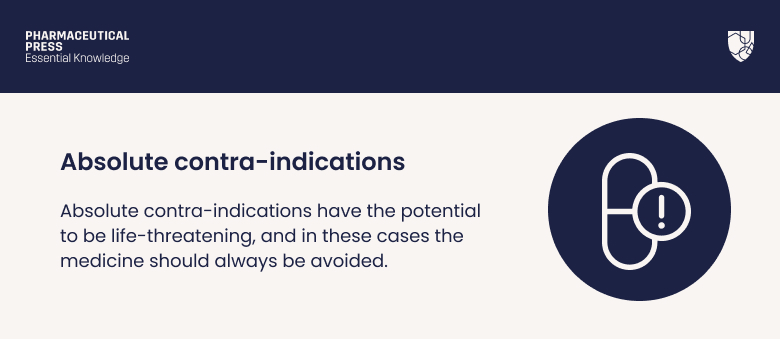
Factors that may affect contra-indications
How a person responds to a drug depends largely on its pharmacokinetics (PK) and pharmacodynamics (PD).
Factors such as age, gender, smoking status, co-morbidities, genetic makeup, and other medication use, can potentially influence the pharmacokinetics and pharmacodynamics of a medicine once it is in the body. All of these considerations, then, can affect contra-indications.⁷
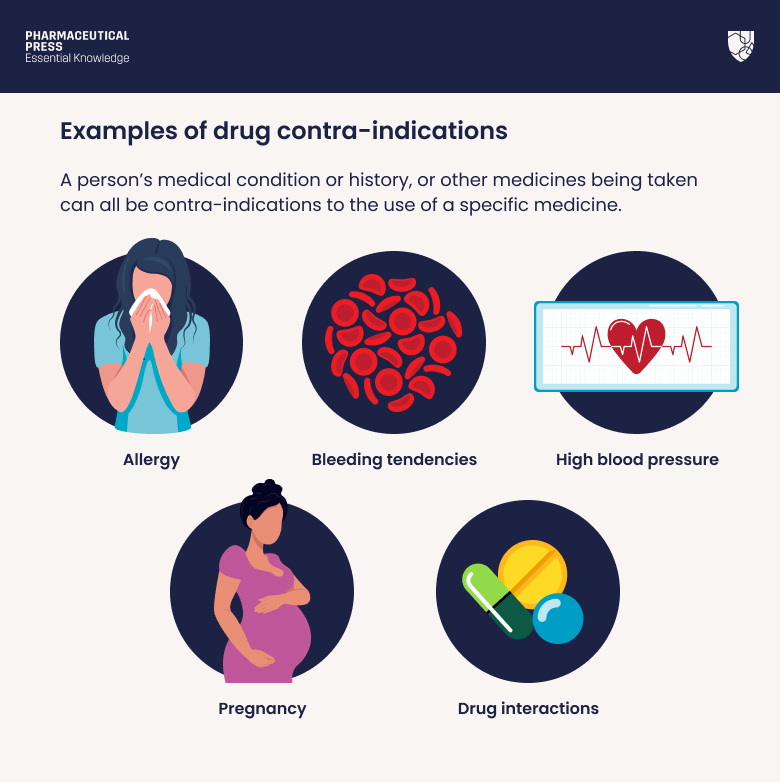
Examples of drug contra-indications
As discussed, a person’s medical condition or history, or other medicines being taken can all be contra-indications to the use of a specific medicine.
Some examples are:
- Allergy
Some people are allergic to certain drugs, with an underlying immunological mechanism. Signs of an allergic drug reaction are wide-ranging and include rash, pruritus or itching, angioedema, bronchospasm, and anaphylaxis. Anaphylaxis, though rare, is life threatening.⁸
Most drugs have the potential to cause allergic reactions. Drug classes commonly implicated include penicillin and related antibiotics, sulfonamide-containing antibiotics, and nonsteroidal anti-inflammatory drugs (NSAIDs). Allergic reactions can also occur with chemotherapy drugs and monoclonal antibodies.⁹
- Bleeding tendencies
Some medicines, such as aspirin and NSAIDs, can interfere with platelet function or clotting.¹⁰
This makes them contra-indicated in people at high risk of major bleeding, such as those with active or previous gastrointestinal ulceration or bleeding disorders. Aspirin and NSAIDs are also best avoided in people taking blood thinning medications, such as warfarin or direct-acting oral anticoagulants (DOACs).
- High blood pressure
Some medicines, such as decongestants (e.g. pseudoephedrine), NSAIDs, corticosteroids and oral contraceptives, can increase blood pressure, so they may not be suitable for people with hypertension.¹¹
- Pregnancy
During pregnancy, drugs taken by the mother can have a harmful effect on the foetus. In the first trimester, medicines can result in congenital malformations. You may find more information in BNF.¹²
- Drug interactions
Drug interactions occur when the effect of one medicine is altered by the co-administration of another drug, food, or herbal product. Often the effect of such an interaction is not clinically significant and occasionally it can be beneficial. Drug interactions can also, however, be clinically significant, requiring action. In some cases, the interaction may cause serious harm, such that co-administration of the two products is an absolute contra-indication.¹³
Where to find more information
Health professionals can find information on drug contra-indications in BNF monographs. Details are also listed in the product’s prescribing information i.e. summary of product characteristics and patient information leaflets.
Conclusion
Considering the contra-indications to the use of a medicine or intervention is a crucial component of safe and effective healthcare. Understanding them helps health professionals to make informed decisions, ensuring that medicines are not used when there is an absolute contra-indication and carefully monitored when caution is needed. This will optimise medication use and protect patients from harmful adverse drug events.
Consulting reliable resources, such as the BNF and product-specific information, ensures contra-indications are adequately considered in the delivery of quality, patient-centred care.
Trial form
Please complete the form below to request a complimentary trial to knowledge products through MedicinesComplete.
References
1. National Cancer institute. (n.d.). Contraindication. Available at: https://www.cancer.gov/publications/dictionaries/cancer-terms/def/contraindication Last accessed: 20th March 2025
2. MedicinePlus. (2023). Contraindication. Available at: https://medlineplus.gov/ency/article/002314.htm Last accessed: 20th March 2025
3. BNF. (n.d.) How to use BNF Publications online. Available at: https://bnf.nice.org.uk/about/how-to-use-bnf-publications-online/ Last accessed: 20th March 2025
4. For more information, https://www.pharmaceuticalpress.com/products/electronic-medicines-compendium-emc/
5. Hughes, R. (2008). Patient safety and quality: An evidence-based handbook for nurses. [ONLINE]. Available at: https://www.ncbi.nlm.nih.gov/books/NBK2656/ Last accessed: 20th March 2025
6. Elliott, R. A., Camacho, E., et al. (2021). Economic analysis of the prevalence and clinical and economic burden of medication error in England. BMJ Quality & Safety, 30(2), 96-105.
7. Dagenais, S., & Haldeman, S. (2011). Evidence-based management of low back pain. Elsevier Health Sciences.
8. Allergy UK. (n.d.). Drug allergy. Available at: https://www.allergyuk.org/types-of-allergies/drug-allergy/ Last accessed: 20th March 2025
9. ACAAI. (n.d.) Drug allergies. Available at: https://acaai.org/allergies/allergic-conditions/drug-allergies/ Last accessed: 20th March 2025
10. The Haemophilia Society. (n.d.) What medicines, herbal products and homeopathic medicine interfere with platelet function or clotting? Available at: https://haemophilia.org.uk/what-medicines-vitamins-and-herbs-interfere-with-clotting/ Last accessed: 20th March 2025
11. American Heart Association. (2024). High Blood Pressure That’s Hard to Treat. Available at: https://www.heart.org/en/health-topics/high-blood-pressure/the-facts-about-high-blood-pressure/resistant-hypertension–high-blood-pressure-thats-hard-to-treat Last accessed: 20th March 2025
12. BNF. (n.d.) Available at: www.medicinescomplete.com Last accessed: 20th March 2025
13. Specialist Pharmacist Network. (2024). Understanding drug interactions. Available at: https://www.sps.nhs.uk/articles/understanding-drug-interactions Last accessed: 20th March 2025



